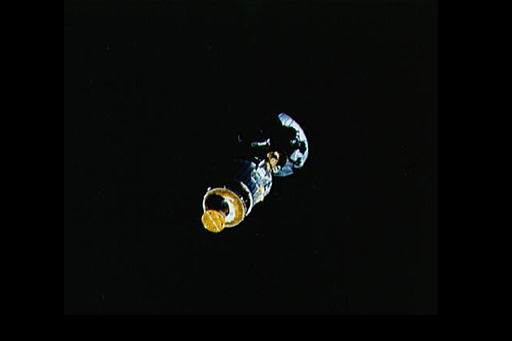2.4 What the images mean
Before spacecraft visited Europa, scientists were expecting its surface to be dark and highly cratered. This is characteristic of moons and planets that have been inactive for millions of years. Smaller bodies lose their internal heat sooner than larger bodies, resulting in cessation of tectonic activity and an ageing crust. Take another look at the planet Mercury and the Moon in the previous step. As Europa is smaller than our Moon, it should also be inactive and scarred by many craters.
The idea of the outer moons being dead, frozen worlds was dashed in 1979, when the Voyager mission captured images of Europa. As you’ve just seen, a smooth, bright surface, few impact craters and mysterious dark fractures were revealed. The surface was young, meaning that new surface was being created. On Earth, this occurs when magma from the mantle rises and cools at the surface along mid-ocean ridges. But on a tiny moon like Europa, a different process must be happening, as there is unlikely to be sufficient internal heat from radioactivity. So scientists turned to another explanation: tidal heating. But how would the tides be manifested on Europa’s surface?

In 2003 the Galileo spacecraft captured more detailed images of the dark fractures imaged by Voyager 1 and 2. Rather than being flat features, they were revealed as belts of near-parallel ridges and grooves. This texture became known as the ball-of-string texture, representing extension of the crust, with gaps being filled in by rising water and freezing to form new crust. Possibly a crack somewhere on Europa opens and closes with every tide, which means twice per orbit. Higher resolution images show that some ridges cross-cut others, revealing many generations of crust extension. Some ridges are offset, suggesting lateral movement. In some areas, the ball-of-string texture is broken up into blocks called rafts and surrounded by matrix. The matrix represents now refrozen ocean that was uncovered when the rafts moved apart. There are also dome features, caused by upwelling of water underneath the crust. These features provide good evidence that there is an ocean beneath the surface, convecting upwards and freezing when exposed at the surface.
See also:
- Best ever view of Daphnis? Here is the best yet view of Daphnis, an 8 km long moon that orbits within one of the gaps in Saturn’s rings. This was captured by Cassini on 16 Jan 2017. Note how it’s gravity has produced a wave-like disturbance in the ring material.
- Close up of Epimetheus. Epimetheus imaged by Cassini on 30 Jan 2017.
- Another close up of Epimetheus. Another 30 Jan 2017 close up by Cassini. Do the fine, largely parallel, grooves on the surface remind you of any other moons?
- Best ever views of Pan. Superb extra detail on Pan, revealed on images recorded by Cassini 7 March 2017.
